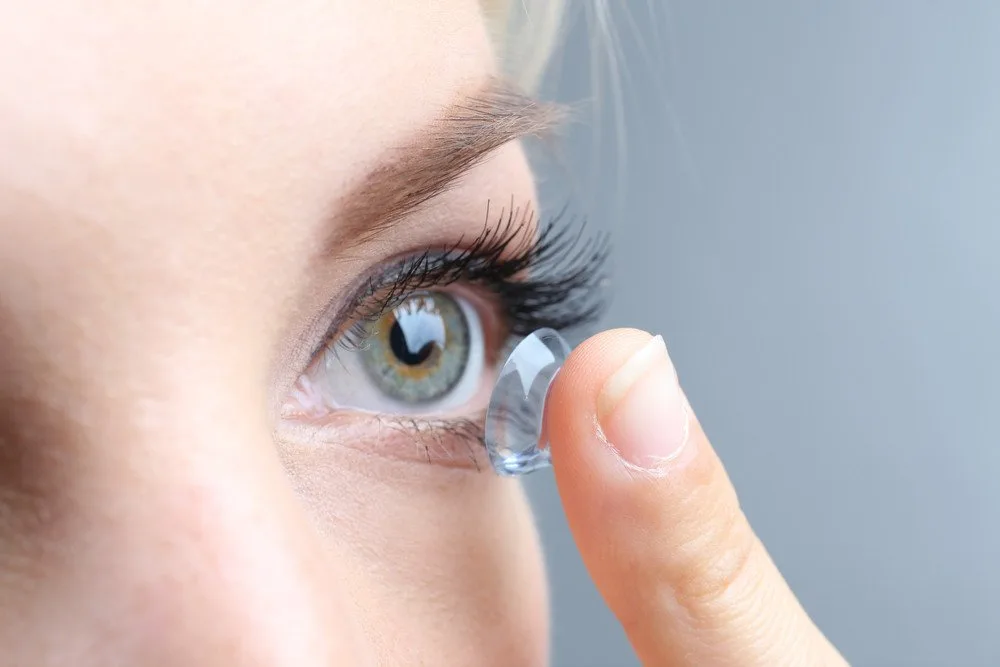For many contact lens users, wearing makeup can pose a bit of a challenge. It doesn’t have to, though. By taking the right steps, you can apply makeup and wear contact lenses without any hassle and without having to worry about eye infections.
5 healthy makeup habits if you wear contact lenses
1. Wash your hands
The cardinal rule of wearing makeup with contact lenses is to wash your hands. Never wear or remove contacts, and then apply makeup without washing your hands first. Regular handwashing gets rid of harmful bacteria that can get into your eyes and cause infections.
You can avoid this by washing your hands and following these steps.
- Wash your hands with antibacterial soap and water.
- Rub your hands together for 20 seconds, making sure that you remove any dirt from underneath your fingernails.
- Rinse thoroughly to remove soap residue.
- Dry your hands using a fresh paper towel.
Washing your hands using the aforementioned method is the best way to prevent infection-causing bacteria from getting into your eyes.
2. Avoid using any products immediately after
After washing your hands, resist the urge to apply products such as lotion, moisturizer, and cream on your hands. These may contain oils, fragrances, or chemicals that can stick to your contact lenses and cause irritation, pain, or allergic reactions.
Before putting in your contact lenses, your hands should be clean, completely dry, and free of any residue. If you want to put products like lotion on your hands, do it after putting in your contact lenses and applying your makeup.
3. Practice the “first in, first out” method
Always put your contact lenses in before you apply makeup and take them out before you remove your makeup.
Find that hard to remember? Just think about it as the “first in, first out” method.
So, why the need for the “first in, first out” method?
When you apply makeup, some residue will inevitably end up on your hands and fingers. If you apply makeup before putting in your contact lenses, you are transferring the makeup residue from your fingers into your contact lenses. This can result in cloudy lenses, blurred vision, eye irritation, and even infection.
The same logic applies when it comes to taking out your lenses before removing your makeup.
Removing your makeup likely means using a makeup remover. If you keep your contacts in while removing your makeup, the chemicals in the makeup remover can damage your contacts and hurt your eyes. To prevent this, you need to take out your contact lenses first.
4. Practice strict contact lens care and safety
Contact lens safety is important for all contact lens wearers. However, it may be even more important for those who also like to wear makeup. With proper contact lens safety, you can minimize your risk of contracting eye infections and ocular diseases.
Take these safety precautions when wearing, cleaning, and storing your contact lenses.
- Wear contact lenses only according to their specified replacement schedule (e.g. bi-weekly contact lenses are meant to be replaced after two weeks).
- Sleep is only in contact lenses that are FDA-approved for continuous wear.
- Have an up-to-date pair of prescription eyeglasses handy at all times in case there’s an emergency, and you have to remove your contact lenses for whatever reason.
- Wear sunglasses to protect the skin around your eyes against UV radiation.
- Clean your contact lenses only according to your eye care professional’s instructions.
- Use only the contact lens solutions prescribed by your doctor.
- Fill your contact lens holder with a fresh solution prior to storing your contact lenses for the night.
5. Choose makeup that is safe for contact lens wearers
As a contact lens wearer, you need to choose the right kind of makeup. Using the right makeup will enable you to avoid any issues with your eyes and prevent makeup residue from accidentally getting into your eyes.
Here are some tips on how to buy the best possible makeup for contact lens wear:
Look for makeup suitable for contact lenses
When shopping for makeup, look for products that are hypoallergenic and tested safe for use with contact lenses. Take time to read labels and do research on ingredients to ensure that using them won’t result in either skin or eye irritation.
Use cream-based makeup
For contact lens wearers, cream-based makeup is always better than powder-based makeup. Unlike its powder-based counterpart, cream-based makeup isn’t composed of fine particles that can easily get into your eyes or contact lenses.
Use oil-free and fragrance-free makeup
If you wear contact lenses, it’s best to use makeup that doesn’t contain oils or fragrances that can get into your eyes and cause irritation and even eye infections. Oils and fragrances can also stain your contact lenses, which can lead to cloudy or blurred vision.
These types of makeup may be more expensive than regular makeup, but it’s a worthy investment if you consider how much safer they are for your skin and eyes.
The bottom line
Wearing contact lenses while also wearing makeup doesn’t have to be a hassle. You just need to stick to healthy makeup habits so that you can avoid potentially serious eye issues. Always remember to:
- Wash your hands.
- Avoid applying products to your hands after washing.
- Practice the “first in, first out” method.
- Practice contact lens safety.
- Choose the right kind of makeup.
By repeating these steps over and over, you’ll establish a safe and healthy makeup routine.
About the Author

Jericho Gonzales
Jericho Gonzales is a Content Marketing Specialist at Lens.com. Writing is his passion, and he specializes in tech-based and consumer product-based writing.
His other passions lie in the worlds of fantasy and science fiction. When he isn’t busy with word crafts, he loves to immerse himself in those worlds through novels, video games, TV shows, or movies.





![women [longevity live]](https://longevitylive.com/wp-content/uploads/2020/01/photo-of-women-walking-down-the-street-1116984-100x100.jpg)









